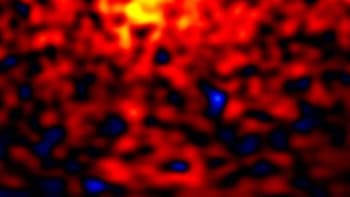
A new class of stars called “fast yellow pulsating supergiants” has been identified by astronomers in the US and Switzerland. The discovery could solve the “red supergiant problem” of astrophysics, which refers to the lack of observations of Type IIP supernova progenitor stars with masses in the range of 16–30 solar masses.
Stars heavier than about 8 solar masses are thought to spent their final phase of life as red supergiants, before undergoing core collapse and exploding as supernovae. The mass of a Type IIP supernova progenitor can be determined by measuring the star’s brightness just before it collapses – which itself occurs before the star explodes. Although red supergiants have been observed in the 16–30 solar masses range, none so far have been identified as progenitors of Type IIP supernovae. This contradiction of the current theory of stellar evolution is known as the red supergiant problem.
It seems that only the lower-mass RSGs explode, which raises the question: what is the fate of the more massive RSGs? One possibility is that many RSGs evolve back to their previous yellow or blue stages of their lifecycle. Such post-RSGs would end their lives as something other than RSGs, thereby resolving the red supergiant problem.
Evolving to yellow and blue
Recently, a team of astronomers sought to observe such post-RSGs. Trevor Dorn-Wallenstein at the University of Washington and colleagues reasoned that stars called pulsating yellow supergiants might be candidates for post-RSGs. If an RSG were to lose enough mass, it would evolve towards yellow and blue on the Hertzsprung-Russell (HR) diagram and pulsate noticeably. The HR diagram plots stars’ luminosity against their effective temperature.
“The red supergiant problem has been around for years,” notes Philip Massey of the Lowell Observatory in Arizona, who was not involved in this latest research. “One explanation is that these stars ‘turn around’ and return to the blue side of the HR diagram. Then the question becomes: how do you distinguish between a post-red supergiant star from a pre-red supergiant star? One way to do it would be to look for pulsations – only post-RSGs should display unusual pulsations. And that’s just what [Dorn-Wallenstein and colleagues] did.”
The team used data from the Transiting Exoplanet Survey Satellite (TESS), which collects light curves of the brightest stars across 85% of the sky. TESS takes observations every two minutes and light curves are graphs that show the brightness of a star as a function of time. Dorn-Wallenstein and colleagues analysed the variability of 76 supergiants in their search for stars that have the predicted properties of post-RSGs.
New class of supergiants
Their search revealed a group of five yellow supergiants that show rapid multiperiodic variability with periods of less than one day. These stars are also more luminous and warmer than typical Cepheid variables (stars that fluctuate periodically in brightness), fainter than out-bursting yellow “hypergiants”, and cooler than the coolest Alpha Cygni variables, which are another type of supergiant. The five yellow supergiants are also concentrated on a region in an HR diagram not previously associated with pulsating stars. As a result, Dorn-Wallenstein and colleagues say that the stars appear to belong to a class of never-before-seen supergiants, which they have called fast yellow pulsating supergiants (FYPSs).
“They established that this variability could not have been a coincidence,” says Massey. “All massive stars have some variability, but they made a convincing case that this is a unique set of objects.”

Quark deconfinement drives supernovae in blue supergiant stars, say astrophysicists
Tantalizingly for the red supergiant problem, the lowest estimated mass of the observed fast yellow pulsating supergiants is close to the highest mass of the red supergiant supernova progenitors. Thus, rather than immediately dying in supernovae, it is plausible that the more massive RSGs evolve into FYPSs as part of their lifecycle.
Dorn-Wallenstein and colleagues leave it to future work to determine the exact evolutionary status of these FYPSs. While these objects may indeed have evolved from RSGs, more theoretical and observational work needs to be done to tell whether or not these FYPSs are definitively the solution to the red supergiant problem.
The study is described in a preprint on arXiv that has been accepted for publication in The Astrophysical Journal.



